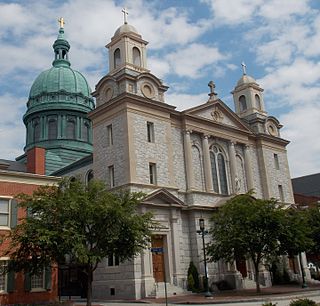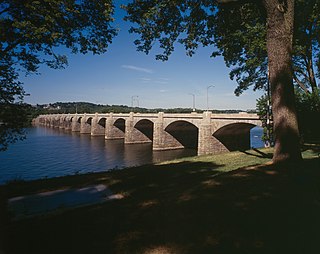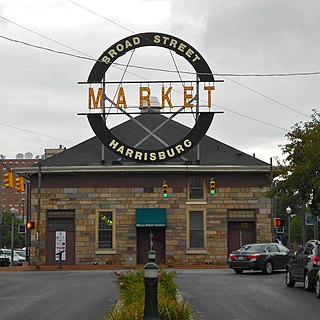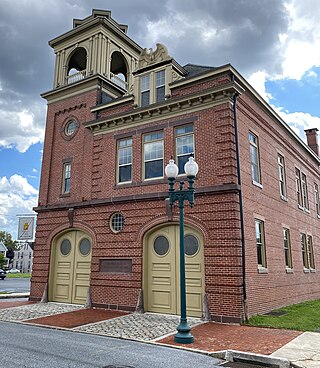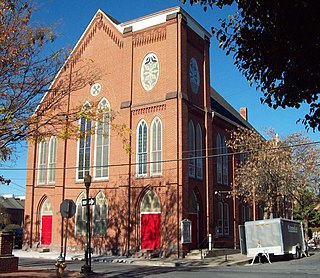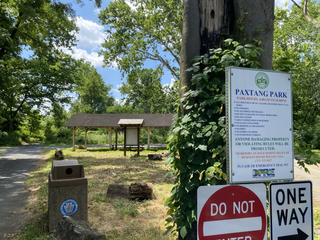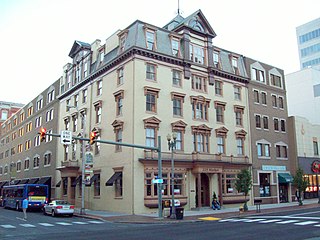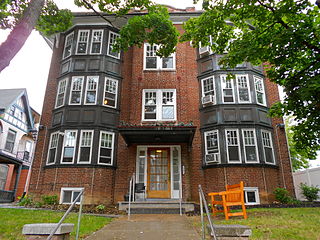14 Sights in Harrisburg, United States (with Map and Images)
Legend
Welcome to your journey through the most beautiful sights in Harrisburg, United States! Whether you want to discover the city's historical treasures or experience its modern highlights, you'll find everything your heart desires here. Be inspired by our selection and plan your unforgettable adventure in Harrisburg. Dive into the diversity of this fascinating city and discover everything it has to offer.
Sightseeing Tours in Harrisburg1. City Island
City Island is a mile-long island in the Susquehanna River between Harrisburg and Wormleysburg, Pennsylvania in the United States. It is used mainly for leisure and sports activities. Its previous names have included Turkey Island, Maclay's Island, Forster's Island and Hargast Island. The island can be reached from either side of the Susquehanna River by Market Street Bridge or, from the Harrisburg side and by pedestrians and cyclists only, by Walnut Street Bridge.
2. State Museum of Pennsylvania
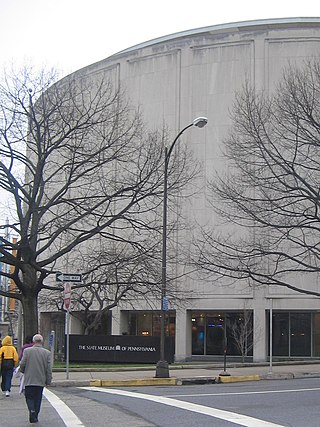
The State Museum of Pennsylvania is a non-profit history museum at 300 North Street in downtown Harrisburg, Pennsylvania, United States. It is run by the Pennsylvania Historical and Museum Commission to preserve and interpret the Commonwealth's history and culture. It is a part of the Pennsylvania State Capitol Complex.
3. Cathedral Parish of Saint Patrick
The Cathedral of Saint Patrick is a cathedral of the Catholic Church in downtown Harrisburg, Pennsylvania, United States. It is the mother church of the Diocese of Harrisburg and is the seat of its bishop. It is a contributing property in the Harrisburg Historic District on the National Register of Historic Places.
Wikipedia: Cathedral of Saint Patrick (Harrisburg, Pennsylvania) (EN), Website
4. Market Street Bridge
The Market Street Bridge is a stone arch bridge that spans the Susquehanna River between Harrisburg, Pennsylvania, and Wormleysburg, Pennsylvania. The current structure is the third bridge built at its current location and is the second oldest remaining bridge in Harrisburg. The bridge carries BicyclePA Route J across the river.
5. Stone Building
The Broad Street Market, opened in 1863, is located in the Midtown neighborhood of Harrisburg, Pennsylvania in the United States. Originally established on Broad Street by the Verbeke family, it is today one of the oldest continuously operating farmers markets in the country.
6. Dauphin County Veteran's Memorial Obelisk
The Dauphin County Veteran's Memorial Obelisk, sometimes called the Harrisburg Obelisk, is an Egyptian-style obelisk that was erected in Harrisburg, Pennsylvania as a tribute to Dauphin County’s Civil War soldiers. Designed by civil engineer E. Hudson Worrall, its planning, development and dedication phases were supervised by the Dauphin County Soldiers' Monument Association, which was formed by an act of the Pennsylvania General Assembly on January 30, 1867.
7. Pennsylvania National Fire Museum
The Pennsylvania National Fire Museum is a museum devoted to fire fighter heritage in Harrisburg, Pennsylvania, United States. The museum has a collection of artifacts from the hand-drawn equipment, vintage fire apparatus, pictures, and information about the history of fire fighting in Pennsylvania and throughout the United States.
8. German Evangelical Zion Lutheran Church
The German Evangelical Zion Lutheran Church, which became the Tabernacle Baptist Church in 1967, is an historic Lutheran church that is located at Capital and Herr Streets in Harrisburg, Pennsylvania.
9. Paxtang Park
Paxtang Park is a hiking and mountain biking park in East Harrisburg, Pennsylvania and Paxtang, Pennsylvania. It is a part of the Capital Area Greenbelt. It was formerly a 40-acre (160,000 m2) trolley park. It existed as a trolley park from 1823 to 1929, and reopened as a hiking park in 2020. The trolley park contained two roller coasters, Coaster Flyer and Jack Rabbit.
10. Colonial Theatre
Colonial Theatre, also known as the Lochiel Hotel, is a historic theater and commercial building located at Harrisburg, Dauphin County, Pennsylvania. The building consists of a five-story, brick and frame front section and a rear brick and frame auditorium. The original Colonial Theatre was built about 1836, as a hotel in the Greek Revival style and featured a four columned portico on the Market Street entrance. It was subsequently modified in form and use a number of times. In the 1870s, a mansard roof was added. The rear auditorium was added in 1912, when the building was converted from a hotel to hotel and movie / vaudeville theater. The lobby was remodeled in the 1930s / 1940s in an Art Deco style; the auditorium has Italian Renaissance style detailing. The theater and hotel closed in 1976, and the building used for offices and shops.
11. Wildwood Park
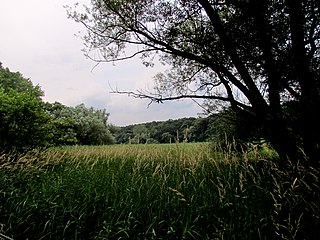
Wildwood Park is a public park and nature sanctuary in Harrisburg, Pennsylvania. The 229 acre park is known for its 90-acre shallow lake with over 6 miles of trails and mile-long boardwalk over the wetlands. The park is located within the city limits of Harrisburg; however, it is administered and maintained by the Dauphin County Parks and Recreation Department. Wildwood Park runs in line with Paxton Creek, a tributary of the Susquehanna River, on the northern side of Harrisburg and adjacent to the main campus of HACC, Central Pennsylvania's Community College. Paxton Creek feeds into the lake, which comprises 60% of the Park. A section of the old Pennsylvania Canal runs parallel to the western trail. The remainder of the park is mixed deciduous forest, and an artificial meadow overlooks the eastern side of the lake. Wildwood Park is also part of the Capital Area Greenbelt.
12. Sheffield Apartments
Sheffield Apartments is a historic apartment building located at Harrisburg, Dauphin County, Pennsylvania. It was built in 1925, and is a three-story, rectangular brick building in the Mission Revival style. The facade is three bays wide, and it features three story bay windows on each side of the center entrance bay. It has 14 apartments.
13. Holocaust Memorial for the Commonwealth of Pennsylvania
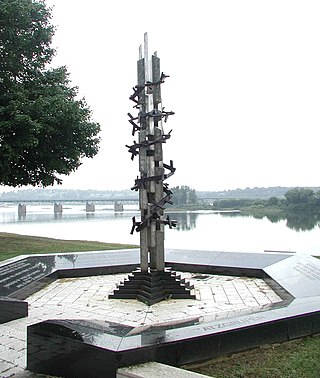
The Holocaust Memorial for the Commonwealth of Pennsylvania is a Holocaust memorial at Front and Sayford Streets along Riverfront Park, in Harrisburg, Pennsylvania. It was conceived by a committee of Holocaust survivors in 1992 representing the Jewish Community Center of Harrisburg. In light of publicity given to the U.S. Holocaust Museum, a group of survivors that had lived in the Harrisburg area pressed for a local memorial. It was designed by David Ascalon for $200,000 on a site designated by the City of Harrisburg along the public park land adjacent to the Susquehanna River. The Memorial was dedicated in 1994. An annual Yom Hashoah observance is held at the site.
Wikipedia: Holocaust Memorial for the Commonwealth of Pennsylvania (EN)
14. A Gathering at the Crossroads
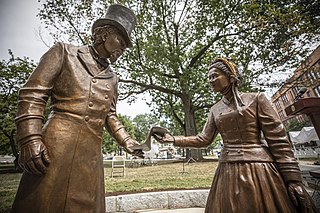
A Gathering at the Crossroads is an African American monument on the southern end of the Pennsylvania State Capitol Complex in Harrisburg, Pennsylvania. Officially dedicated in 2020 to commemorate the 100 and 150-year anniversaries of the passing of the Fifteenth Amendment and Nineteenth Amendment, the monument celebrates the power of the vote and commemorates the historic African American community in Harrisburg and the wider Commonwealth of Pennsylvania between 1850 and 1920.
Share
How likely are you to recommend us?
Disclaimer Please be aware of your surroundings and do not enter private property. We are not liable for any damages that occur during the tours.

